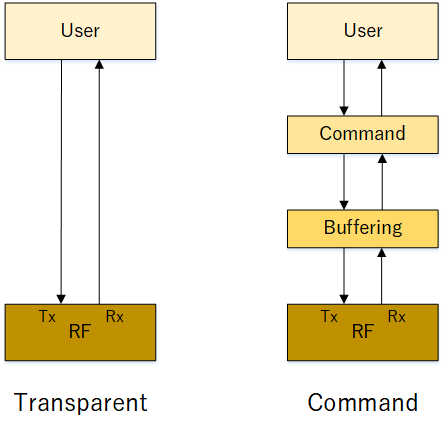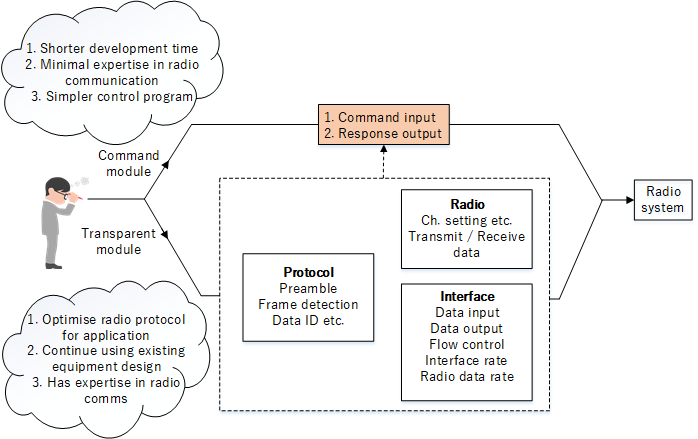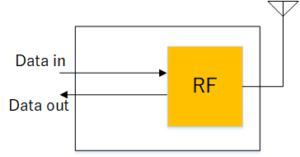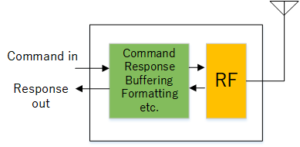Comparing transparent and command interfaces
Introduction
In this article, we will compare Circuit Design modules whose interface is designated as "transparent" with those that use commands to send and receive data. The article is not an attempt at highlighting which is better as both methods allow the sending and reception of binary signals. But depending on the application, the engineer needs to be aware of the differences between the two types to select the one best suited for his/her needs.
General configuration
The best way to categorise the two types, is that the transparent interface allows you to directly modulate a carrier from signal transitions that are input to the module and to demodulate and output those same signal transitions at the target module. In other words, the engineer is handling raw bits and can fully customise the format. On the other hand, modules that use command contain layers of data handling processes (such as buffering, error correction etc.) adding an interface between the user and the radio part.

Configuration of transparent and command
So which one should the engineer choose?
The image below highlights the difference between transparent and command modules relative to the system design. If the engineer wants to design own protocol, he/she can follow the bottom route and use a transparent module. If the engineer does not intend to design own protocol, he/she can follow the top route and use a command module.
 If the engineer chooses to use a transparent module, you can see that all the design processes have to be considered separately when designing the radio system. For command modules, these processes are integrated into the module. We will go over some of the design processes and compare them with respect to command and transparent modules.
If the engineer chooses to use a transparent module, you can see that all the design processes have to be considered separately when designing the radio system. For command modules, these processes are integrated into the module. We will go over some of the design processes and compare them with respect to command and transparent modules.
Final points
For command modules, the main advantage is shorter development time for the engineer when designing the radio system. Commands can be used, not just for sending and receiving data but also module radio settings. These points make the module suitable for engineers with little or no knowledge of radio who want to make a wireless product. From a hardware point, there is less burden - with the module's own protocol taking care of the data handling and detection. The hardware can focus on other tasks or be in a rest state until a transmission is received.
On the other hand, the engineer may want to dedicate as much time on perfecting the radio aspect if he/she wants to avoid the constraints of using a command module. In this case, a transparent module would be more suitable as it contains just the radio part and if the engineer has the necessary radio knowledge, they can fully design their system around this, including the protocol. As the transparent module does not contain the extra processing layers for commands, there will be no data latency which is better for operations where timing is critical. This also makes it simpler in design with the module costing less than the command module.


